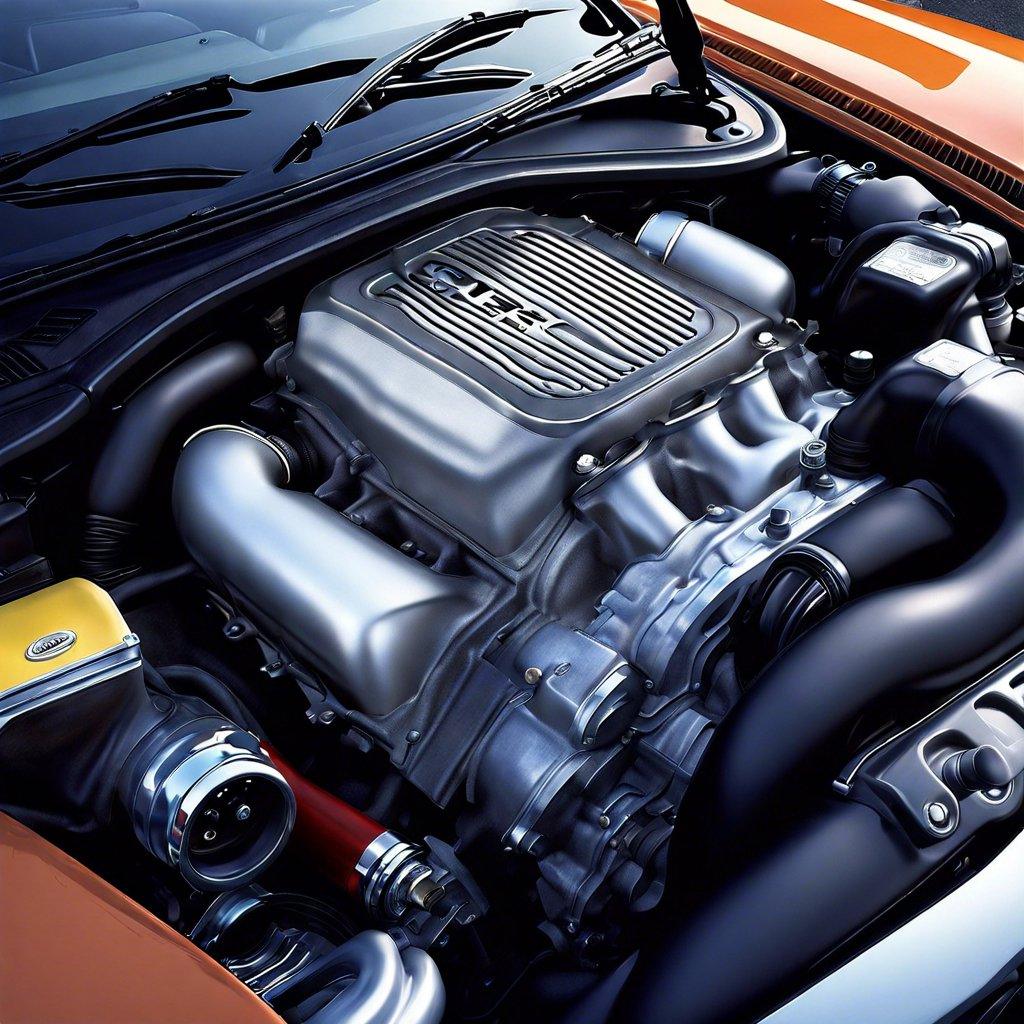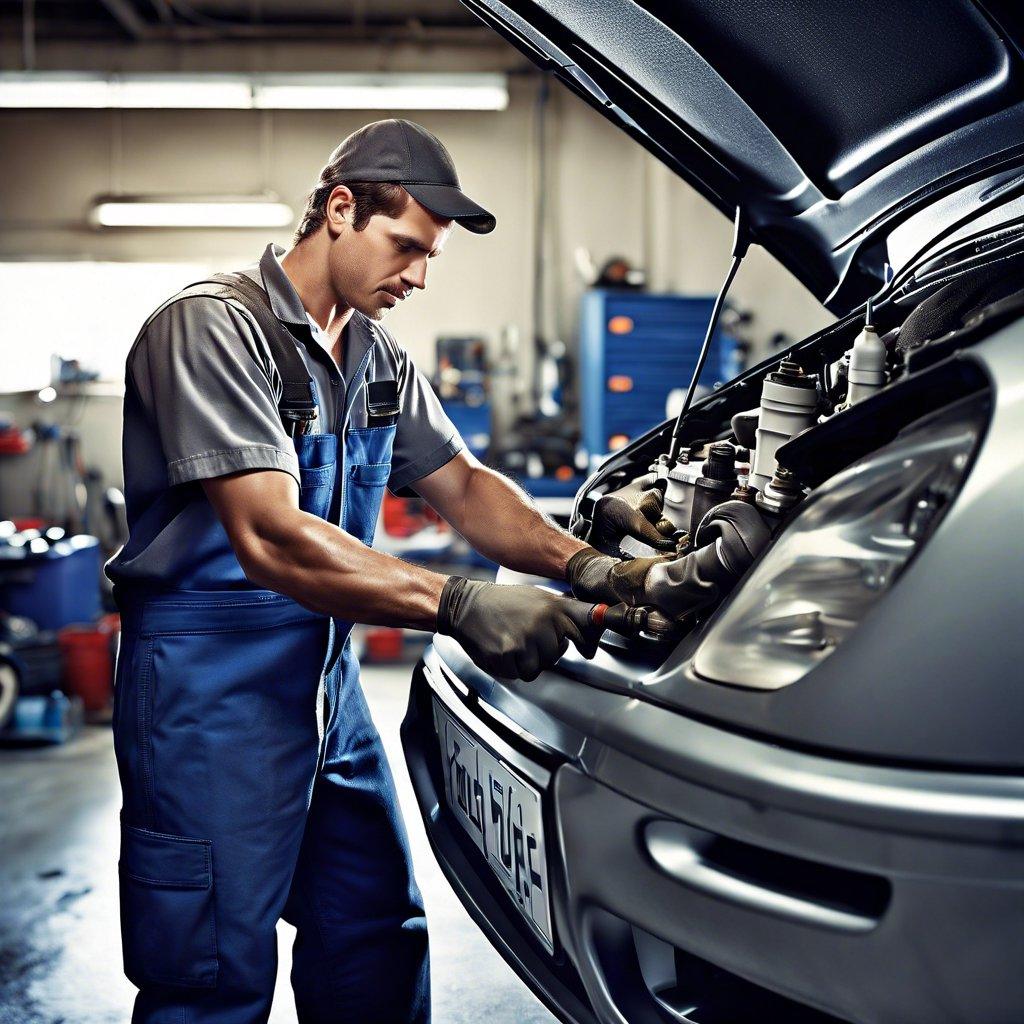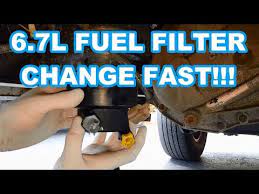Replacing Your Fuel Filter: Simplified
Identifying the Fuel Filter: A Crucial Component

The fuel filter is a vital component in your vehicle’s fuel system, responsible for removing contaminants and impurities from the fuel before it reaches the engine. Identifying the fuel filter is the first step in understanding its importance and the necessity of regular replacement.
Location and Appearance: The fuel filter is typically located between the fuel tank and the fuel pump, often in the engine compartment or along the fuel line. It is a cylindrical or canister-shaped component, usually made of metal or plastic, and can be easily identified by its distinct appearance.
Function and Importance: The fuel filter’s primary function is to trap and remove dirt, rust, and other impurities from the fuel before it enters the fuel injectors or carburetor. This helps to prevent damage to critical engine components, such as the fuel pump, fuel injectors, and the engine itself. A clogged or dirty fuel filter can cause reduced fuel flow, engine hesitation, and decreased fuel efficiency, making it a crucial component for the proper functioning of your vehicle.
Regular Replacement: To maintain optimal engine performance and fuel efficiency, it is recommended to replace the fuel filter at the intervals specified by the vehicle manufacturer. Refer to your owner’s manual or consult with a qualified mechanic to determine the appropriate replacement schedule for your vehicle.
By understanding the role and importance of the fuel filter, you can take proactive steps to ensure the longevity and performance of your vehicle’s engine.
Effortless Removal: Mastering the Fuel Filter Extraction
As an engineering or technology professional, maintaining your vehicle’s fuel system is crucial for optimal performance and efficiency. One key component that requires periodic replacement is the fuel filter. In this comprehensive guide, we’ll walk you through the effortless process of extracting and replacing your vehicle’s fuel filter, ensuring a seamless and hassle-free experience.
Preparing for the Task
Before you begin, ensure you have the necessary tools and supplies on hand, including:
- Replacement fuel filter (consult your owner’s manual for the correct part number)
- Wrench or filter wrench
- Rag or absorbent cloth
- Catch pan to contain any fuel spillage
Fuel Filter Extraction
Follow these steps to expertly remove the old fuel filter:
- Locate the fuel filter, typically positioned along the fuel line near the engine or fuel tank.
- Disconnect the fuel line connections on both sides of the filter, taking care to minimize fuel spills.
- Using the appropriate wrench or filter wrench, gently loosen and remove the old fuel filter.
- Have the catch pan ready to contain any residual fuel that may drain from the system.</
Installing the New Fuel Filter
With the old filter removed, it’s time to install the replacement:
| Step | Action |
|---|---|
| 1 | Ensure the new fuel filter is the correct replacement for your vehicle. |
| 2 | Apply a thin coat of clean engine oil to the gasket or seal of the new filter. |
| 3 | Carefully hand-tighten the new filter until it is secure, avoiding over-tightening. |
| 4 | Reconnect the fuel lines to the new filter, ensuring a tight and secure connection. |
Completing the Process
After installing the new fuel filter, follow these final steps:
- Start the engine and check for any fuel leaks around the new filter.
- If no leaks are present, the replacement is complete, and you can safely return your vehicle to service.
- Dispose of the old fuel filter and any cleaning rags properly, following local environmental regulations.
By following these straightforward steps, you can confidently replace your vehicle’s fuel filter and maintain the optimal performance of your fuel system. Remember to consult your owner’s manual for any specific instructions or requirements unique to your make and model.
Seamless Installation: Ensuring a Proper Fuel Filter Fit
Replacing a fuel filter is a critical maintenance task, ensuring the efficient and reliable operation of your vehicle’s engine. However, the process can be daunting if you’re not familiar with the proper techniques. In this comprehensive guide, we’ll walk you through the steps to ensure a seamless fuel filter installation, focusing on the importance of achieving a proper fit.
Identifying the Correct Fuel Filter
Before you begin the installation process, it’s essential to select the right fuel filter for your vehicle. Consult your owner’s manual or speak with a trusted automotive professional to determine the appropriate replacement part. Ensure that the new fuel filter matches the specifications of the original, including its size, flow rate, and compatibility with your vehicle’s fuel system.
Preparing the Work Area
Choose a well-lit and well-ventilated workspace to perform the fuel filter replacement. Gather all the necessary tools, including a fuel line disconnect tool, a wrench or socket set, and a container to catch any fuel spillage. Wear appropriate personal protective equipment, such as gloves and eye protection, to ensure your safety.
Disconnecting the Old Fuel Filter
Carefully locate the fuel filter, which is typically situated along the fuel line. Use the fuel line disconnect tool to gently separate the fuel lines from the filter. Take note of the orientation of the filter to ensure the new one is installed correctly. Dispose of the old filter properly, following local regulations.
Before installing the new fuel filter, ensure that the fuel lines are clean and free of any debris. Carefully align the new filter with the fuel lines, ensuring that the inlet and outlet are correctly positioned. Use the appropriate wrenches or sockets to secure the filter in place, taking care not to overtighten the connections.
Checking for Leaks and Priming the Fuel System
Once the new fuel filter is installed, start the engine and check for any fuel leaks around the connections. If any leaks are present, turn off the engine and tighten the connections further. After confirming the absence of leaks, follow the manufacturer’s instructions to prime the fuel system, ensuring that the new filter is filled with fuel and the engine is ready to run.
Disposing of the Old Filter Properly
Properly dispose of the old fuel filter in accordance with local environmental regulations. Some municipalities may have specific guidelines for the disposal of automotive fluids and parts, so be sure to check with your local authorities.
Replacing a fuel filter is a critical maintenance task that ensures the continued reliable performance of your vehicle’s engine. By following the steps outlined in this guide, you can ensure a seamless installation and a proper fuel filter fit, keeping your vehicle running at its best.
Remember, if you’re unsure about any part of the fuel filter replacement process, it’s always best to consult a professional automotive technician to ensure the job is done correctly and safely.
Maintaining your vehicle’s fuel system is essential for optimal performance and fuel efficiency. By understanding the importance of a proper fuel filter fit, you’re taking a proactive step in keeping your vehicle running smoothly.
Optimizing Performance: The Benefits of Regular Fuel Filter Replacement
As an engineering or technology professional, you understand the importance of maintaining your vehicle’s optimal performance. One often overlooked, yet crucial component in this pursuit is the fuel filter. Regularly replacing your fuel filter can provide numerous benefits that can significantly enhance the efficiency and longevity of your vehicle’s engine.
Improved Fuel Efficiency
A clogged or dirty fuel filter can restrict the flow of fuel to the engine, leading to decreased fuel efficiency. By replacing the fuel filter at the recommended intervals, you can ensure that the engine is receiving the necessary fuel supply, resulting in improved gas mileage and reduced fuel consumption.
Enhanced Engine Performance
When the fuel filter is working effectively, it helps to remove contaminants and impurities from the fuel before it reaches the engine. This ensures that the engine is receiving clean, unobstructed fuel, which can lead to improved power, acceleration, and overall engine performance.
Extended Engine Life
Contaminants in the fuel can cause significant damage to critical engine components, such as the fuel injectors and the fuel pump. By regularly replacing the fuel filter, you can protect these essential components from premature wear and tear, ultimately extending the lifespan of your vehicle’s engine.
Reduced Emissions
A well-functioning fuel filter can also contribute to lower emissions from your vehicle. By removing impurities and ensuring optimal fuel delivery, the engine can operate more efficiently, reducing the amount of harmful emissions released into the environment.
Cost-Effective Maintenance
Compared to the potential cost of engine repairs or replacement, the investment in regular fuel filter replacement is relatively small. By being proactive with this simple maintenance task, you can avoid more expensive issues down the road, making it a cost-effective way to maintain your vehicle’s performance and longevity.
As an engineering or technology professional, you understand the importance of optimizing the performance of your vehicle. By regularly replacing your fuel filter, you can unlock a range of benefits, including improved fuel efficiency, enhanced engine performance, extended engine life, reduced emissions, and cost-effective maintenance. Prioritizing this simple yet crucial component of your vehicle’s maintenance routine can help you maintain peak performance and enjoy a more reliable, efficient, and environmentally-friendly driving experience.




Post Comment